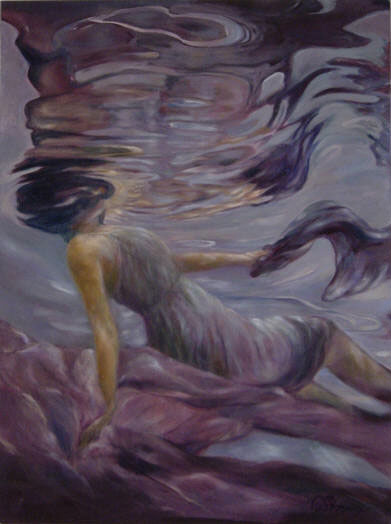Tearing of the Veil
Art is man’s interpretation of the world, but the world itself is the original art. Everything is physical, literal, historical, but everything is also symbol. This is not an interpretation imposed upon what we observe. The Creation was actually made as symbol. Without the Word of God, we are rendered unable to interpret it. [1]
The meaning of the sun, moon and stars in Genesis 1 is not simply a poetic idea. The purpose of the heavenly lights is actual and practical. Moreover, it will be measured out in human flesh over and again throughout history.
God follows a seven-squared pattern in the Creation week, and then the narrative zooms in to describe a similar routine in the making of Man. Only the eye of the poet sees this mirroring, but the account is historical nonetheless. The pattern of Word in Creation becomes a pattern measured out in flesh.
I’ve almost finished Housekeeping by Marilynne Robinson, and she weaves this idea effortlessly throughout the book. Not perfect theology (being the world understood through the eyes of the abandoned child in the story), but a striking rendition of the relationship between the physical Domain and its microcosm, the Man, is her account of the tearing of earth and heaven, between divided waters and torn flesh. It is not animism. It is an understanding of God’s sovereignty over the physical world and over its history, everything carrying the imprint, the type, of the same finger:
Cain killed Abel, and the blood cried out from the ground—a story so sad that even God took notice of it. Maybe it was not the sadness of the story, since worse things have happened every minute since that day, but its novelty that He found striking. In the newness of the world God was a young man, and grew indignant over the slightest things. In the newness of the world God had perhaps not Himself realised the ramifications of certain of His laws, for example, that shock will spend itself in waves; that our images will mimic every gesture, and that shattered they will multiply and mimic every gesture ten, a hundred, or a thousand times. Cain, the image of God, gave the simple earth of the field a voice and a sorrow, and God Himself heard the voice, and grieved for the sorrow, so Cain was a creator in the image of his Creator. God troubled the waters where He saw His face, and Cain became his children and their children and theirs, through a thousand generations, and all of them transients, and wherever they went everyone remembered that there had been a second creation, that the earth ran with blood and sang with sorrow. And let God purge this wicked sadness away with a flood, and let the waters recede to pools and ponds and ditches, and let every one of them mirror heaven. Still, they taste a bit of blood and hair. One cannot cup one’s hand and drink from the rim of any lake without remembering that mothers have drowned in it, lifting their children toward the air, though they must have known as they did that soon enough the deluge would take all the children, too, even if their arms could have held them up. Presumably only incapacity made infants and the very old seem harmless. Well, all that is purged away, and nothing is left of it after so many years but a certain pungency and savour in the water, and in the breath of creeks and lakes which, however sad and wild, are clearly human.
(Housekeeping, pp. 192-193)
[ Art: Adrift by Catherine Stringer ]


























